Reading & Use of English Part 3
Welcome to the third article on Reading & Use of English. Because this post is very specific to only one part of the FCE exam I thought it might be good for you to also receive some general information about Cambridge B2 First as well as the whole Reading & Use of English exam paper. Go over to those articles as well and find out about all the little things that will help you to get ready.
Apart from this general information I have also written more specific articles like the one you are reading right now about the other six parts in this paper where I give you my very best advice from years of experience as a teacher. Feel free to browse through them as well and get tips & strategies for every part of the exam. Just click on the buttons below.
What do you have to do in part 3?
Word formation. You get a text with eight gaps. For each gap you get one word which you have to change so the grammar and meaning fit in the sentence. Here you have to show how well you know word families and if you can change words by using prefixes and suffixes (Prefixes are little syllables you put at the beginning of a word like un-, in-, over-, etc. while suffixes go at the end of a word, for example -tion, -able, etc.).
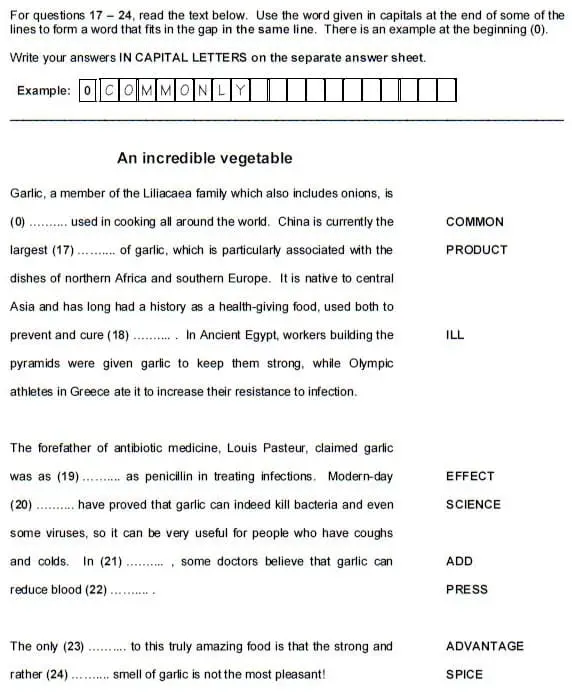
At the very top there is always an example for you. The example is the gap in the text with number 0. A lot of students get confused because they try to put the first answer in gap 0. Ignore that and start with number 17. I have seen many people getting zero marks because they made this tiny but terrible mistake.
Reading & Use of English Part 3 tests your knowledge of word families, which are groups of words that all come from the same word stem. Here is an example for you:
| word stem | noun | plural noun | verb | adjective | negative adjective | adverb |
| use | use, usage, user | uses, users | use, reuse | useful, usable | useless, unusable | usefully |
From the stem (in grammar books you might also see the term ‘root’) ‘use’ we can make a noun, verb (and all verb forms), adjective, adverb, negative forms, plurals and many others. You have to decide which of all these family members needs to go into the gap to make the sentence grammatically correct and to give it the appropriate meaning for the given context.
Part 3 belongs to the Use of English portion of the exam paper together with parts 2 and 4. It is really important for you to understand the structure of Reading & Use of English so you can prepare properly with the right strategy and plan for each part.
The 3 most difficult things about this part?
Like in any other part of the FCE exam candidates struggle with certain things in Reading & Use of English Part 3, so I thought it would be a good idea to give you the three most common problems and then show you how to deal with them.
1. Candidates don’t know how to do the task
There is one problem that always comes up in my preparation classes so please read the next sentence carefully. In Reading & Use of English Part 3, the words on the right always belong in the gap that they are next to. You don’t have to choose the gap for each words. Only worry about the correct form of each word. Have a look at the example below:

There are no secrets to this. Just put each word in the gap in the same line of the text without mixing them up and you’ll be fine. It’s that easy.
2. Candidates don’t know word families
Word families are the key to good marks in this part. Therefore, make sure that you study them from the beginning. I always see crazy word monsters in practice exams because students didn’t study enough so they are forced to guess wildly. You don’t want to be one of them. You want to be a pro so start early and create habits. In the next section I’m going to give you some useful tips on how to do that so keep reading.
3. Candidates have problems with time management
This is a rather general problem in Reading & Use of English. You only have 75 minutes to complete all seven parts of this exam paper so a lot of candidates struggle. Without a good plan for your time management you could get into trouble too.
Tips & strategies
Fortunately for you, there are very good ways to prepare for the exam as whole and for Reading & Use of English Part 3 in particular. My most general piece of advice is always to prepare properly. You don’t want to leave your success to good luck. I have seen many students get amazing results because they started to prepare early and consistently. Create habits so studying for FCE becomes part of your routine and it will be easier to pass.
If there was one thing I would recommend doing on a daily basis, I would say that you should read in English every single day. Use any text you enjoy reading like novels, non-fiction, news reports, magazine articles, websites, etc. The material you enjoy reading most is the best thing to read for you. Read for 5-10 minutes with a pen in your hand and highlight between 5-10 new words, expressions or grammatical structures. Once you finish reading, you can check with a good online English dictionary or a great grammar book like English Grammar in Use (Click here to have a look on Amazon) and learn something new every single day. Does that sound good to you? I thought so, you’re welcome. 😉
Now let’s have a look at part 3 more specifically. It is always a great idea to have plan on how to go through the task step by step. If you keep this in mind you will be faster and feel more confident because you actually know what you are doing without just guessing.
- Read the title and text quickly (optional)
- Look at the words around the gap and analyse it
- Change the key word and put it in the gap
- Read the text again
This is the plan in short, but let me give you a bit more detail for each step.
1. Read the title and text quickly (optional)
It is definitely a good idea to do this when you first look at the task. Reading the title and text QUICKLY gives you a general idea about the topic and what to expect. Some candidates prefer to go straight to the next step without reading the text, which is fine if you are very comfortable with word families as well as reading and grammar in general, but I have seen great benefits for the majority of my students. Try it and see if it works for you or not.
2. Look at the words around the gap and analyse it
This is the step where you really have to work. If you do this right, the rest will be super easy. Before you can put anything in the gaps you have to decide on the correct grammar (noun, verb, adjective, adverb, plural, etc.) as well as the correct meaning (positive/negative or any other modification) to fit the gap perfectly.

Looking at gap 17 we can very quickly that we need a noun as we have a superlative adjective before and an expression of possession after the gap. Both tell us that a noun is needed in the gap. Now that we know that we go to the next step.
3. Change the key word and put it in the gap
Our key word in gap 17 is ‘product’, but we have to change it in order to fit in the gap. Even though product is already a noun, ‘China is currently the largest product of garlic’ doesn’t make a lot of sense. Instead, China is the country that makes the largest amount of garlic so ‘product’ becomes ‘producer’ because a producer makes things.
I recommend doing steps 2 and 3 for each gap, then for the next one and so on. This way you can fully focus on one gap and once you’re done with it, you can forget about it and move to the next one.
4. Read the text again
Before you transfer your answers onto the answer sheet read the text one last time just to check if the word form you chose really makes sense looking at the whole text. We sometimes focus too much on the details and then, when we read the text again, we realise that our choices were not perfect after all. Take that extra minute and make sure that you get all the marks you deserve for your hard work.
Other tips
The most important thing to study for Reading & Use of English Part 3 are word families. Studying them is actually not that difficult, but you have to be consistent. Whenever you find a new word, for example, when you do your daily reading practice, write down not only the root word, but also all the other members of the family. In good online English dictionaries word families are often shown as well so you can create your own little dictionary in your notebook or on your computer. You can then revise and practise them whenever you have time.
Time management and choosing a good sequence of the different parts can save you a lot of time and make your life easier. As I mentioned above, you only get 75 minutes to complete everything so you need to be equipped with the best tools. Find out more in my article on the topic and focus on the important things.
The last two tips refer to giving your answers on the answer sheet. Firstly, you should always answer all the questions even if there are a few that you don’t know or are not sure about. In Cambridge B2 First you don’t lose marks for wrong answers. Therefore, answer everything and hope for a surprising extra mark or two. Secondly and lastly, you have to spell all your answers correctly or they will be marked incorrect. Because Reading & Use of English is the exam paper that tests your grammar and vocabulary spelling is also one thing you have to consider. Double check all your answers before you put them on the answer sheet to avoid losing marks because of avoidable mistakes.
What about the other parts?
If you enjoyed this article and find the information helpful, check out my advice for the other parts of Reading & Use of English by clicking on the buttons below.
Lots of love,
Teacher Phill 🙂








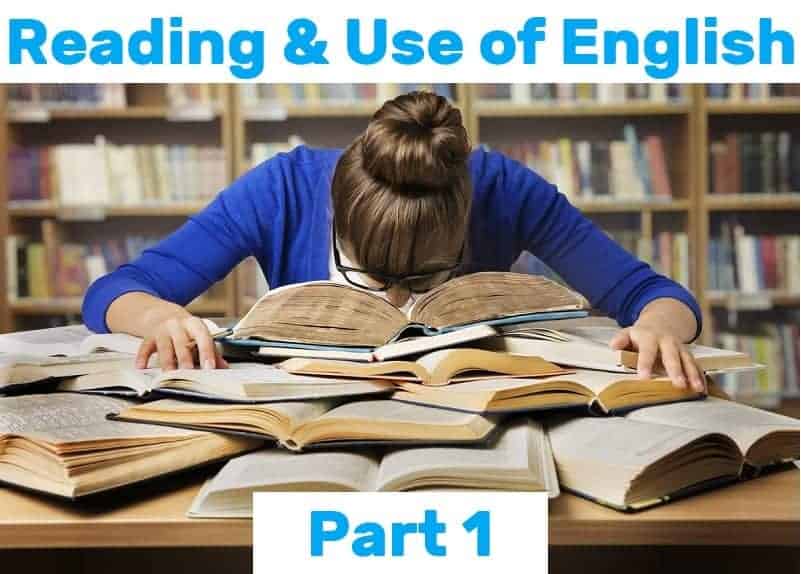
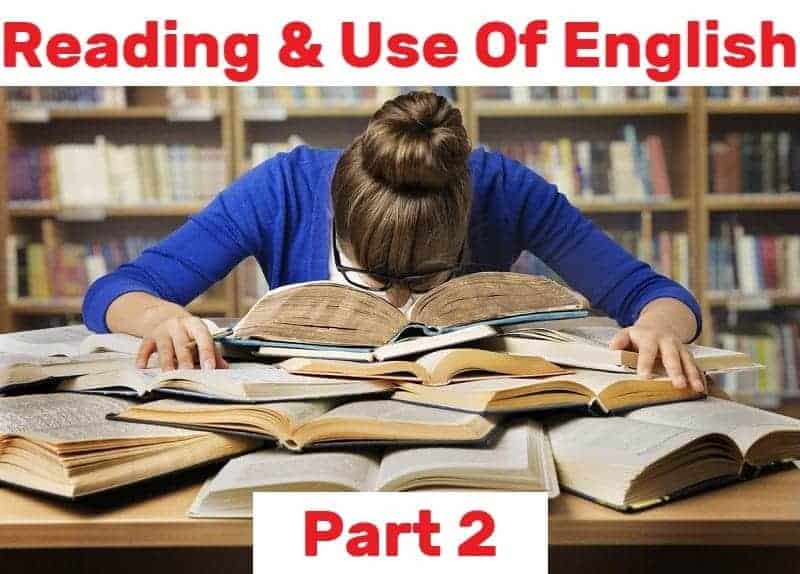

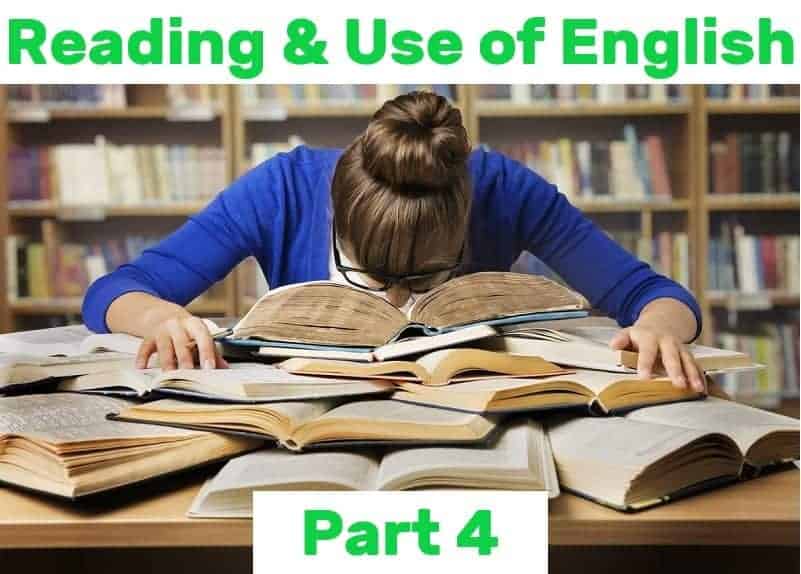

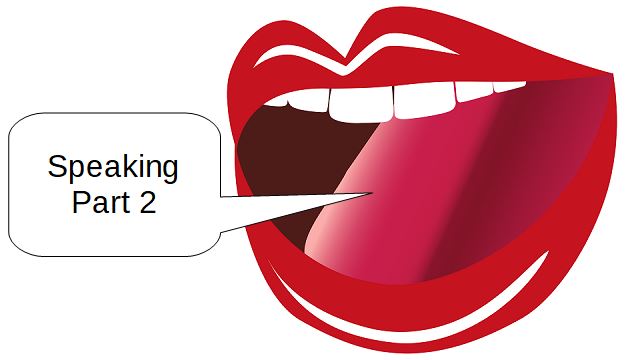
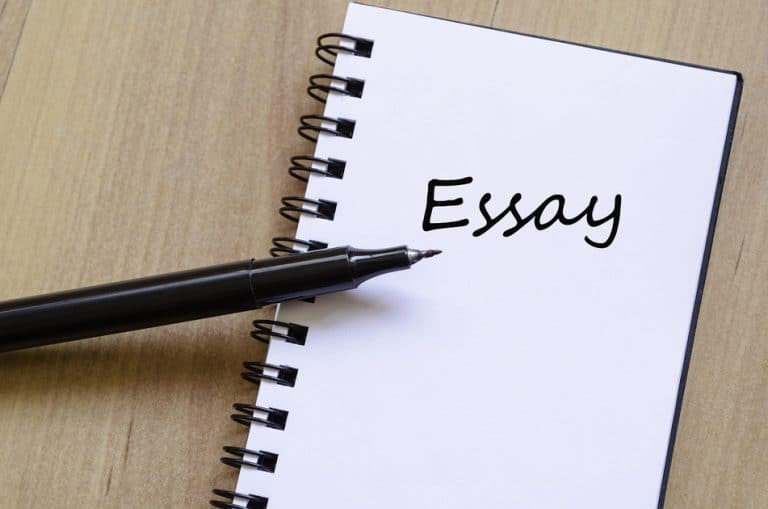

I am glad to be a visitor of this pure blog! , thankyou for this rare info ! .
You’re welcome and I’m happy you enjoy my content. 🙂